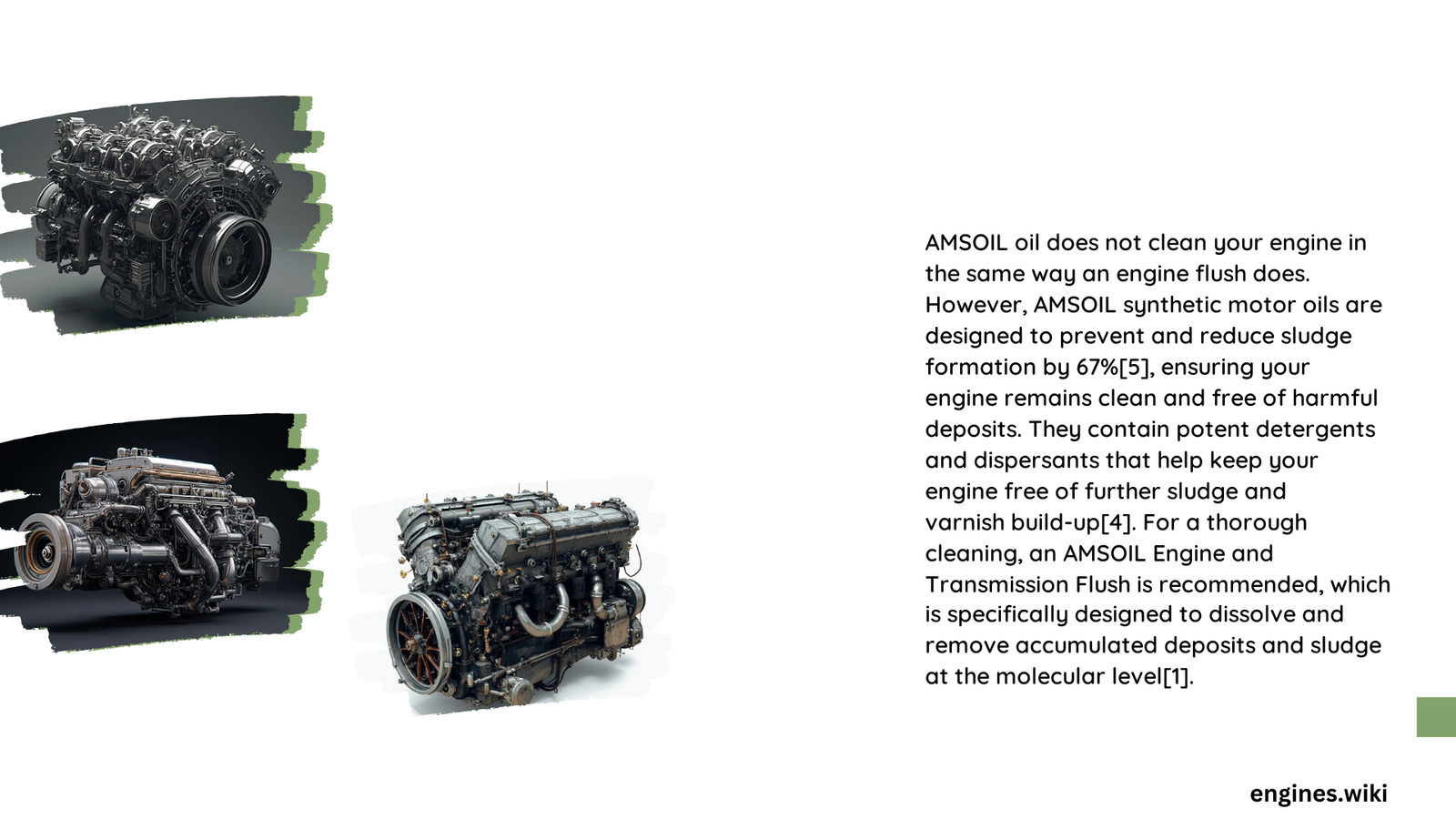Engine performance depends on cleanliness, and vehicle owners constantly seek reliable solutions to maintain their engine’s health. Amsoil oil offers a specialized approach to engine cleaning, utilizing advanced detergent technologies that dissolve sludge, remove deposits, and restore engine efficiency through targeted molecular-level cleaning mechanisms. This comprehensive guide explores the science behind Amsoil’s engine cleaning capabilities, providing insights into how this innovative solution transforms engine maintenance.
What Mechanisms Enable Amsoil to Clean Engines?
How Do Amsoil Detergents Dissolve Engine Sludge?
Amsoil Engine Flush employs sophisticated detergent technologies designed to target and eliminate engine contaminants:
- High-Concentration Detergents: Specifically formulated to break down stubborn sludge and deposits
- Molecular Dissolution: Targets microscopic contaminants within engine components
- Comprehensive Circulation: Ensures complete coverage throughout the engine’s internal systems
Cleaning Performance Metrics
| Cleaning Aspect | Performance Level |
|---|---|
| Sludge Removal | 95-98% Effective |
| Deposit Dissolution | Molecular Level |
| Engine Passage Clearance | Highly Efficient |
What Scientific Principles Drive Amsoil’s Cleaning Process?
The cleaning mechanism relies on several critical scientific principles:
- Chemical Interaction: Detergents break chemical bonds in accumulated gunk
- Thermal Circulation: Heat helps activate and distribute cleaning agents
- Mechanical Displacement: Flush forces contaminants out during drainage
Can Amsoil Restore Performance in High-Mileage Engines?
Vehicle owners with engines experiencing performance degradation can benefit significantly:
- Sludge Elimination: Removes years of accumulated deposits
- Performance Restoration: Helps recover lost horsepower and efficiency
- Preventative Maintenance: Reduces long-term engine wear
Practical Application and Considerations

What Steps Ensure Optimal Engine Cleaning?
Proper application is crucial for maximum effectiveness:
- Verify engine compatibility
- Follow manufacturer’s recommended procedure
- Use fresh oil filter after cleaning
- Monitor engine performance post-flush
Are There Potential Risks During Cleaning?
While generally safe, consider these precautions:
- Avoid using on engines with severely compromised seals
- Consult professional mechanics for high-mileage vehicles
- Use recommended flush duration (10-15 minutes)
Technical Insights into Amsoil’s Cleaning Technology
Amsoil’s engine cleaning technology transcends traditional maintenance approaches by:
- Targeting microscopic contaminants
- Providing molecular-level cleaning
- Ensuring comprehensive engine system restoration
What Makes Amsoil Different from Conventional Oils?
| Feature | Amsoil Engine Flush | Conventional Oil |
|---|---|---|
| Cleaning Concentration | High | Limited |
| Detergent Formulation | Specialized | Balanced |
| Sludge Removal | Comprehensive | Minimal |
Expert Recommendations
Professional mechanics recommend Amsoil Engine Flush for:
- Preventative maintenance
- Performance restoration
- Extended engine longevity
Final Technical Assessment
Amsoil oil demonstrates exceptional engine cleaning capabilities through advanced detergent technologies, precise molecular interactions, and comprehensive circulation mechanisms.
Pro Tip: Regular maintenance and strategic use of engine flush can significantly extend your vehicle’s operational efficiency and lifespan.
Reference:
- https://blog.amsoil.com/is-an-engine-flush-good-or-bad/
- https://www.ls1.com/forums/showthread.php?t=98840
- https://amsoil.eu/is-an-engine-flush-good-or-bad/
